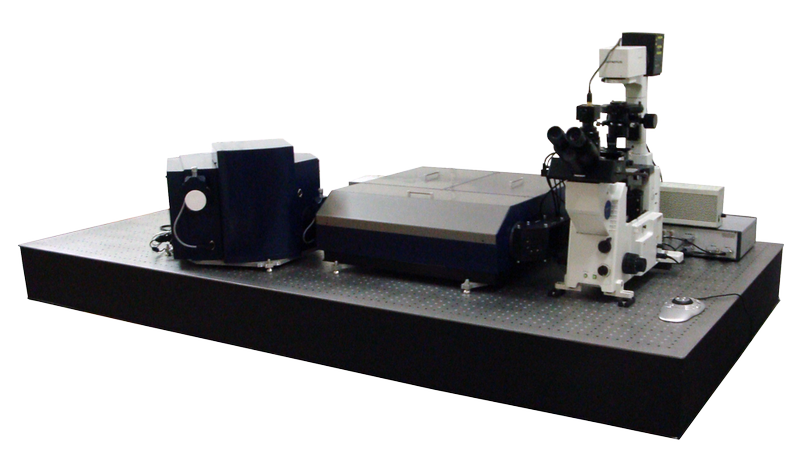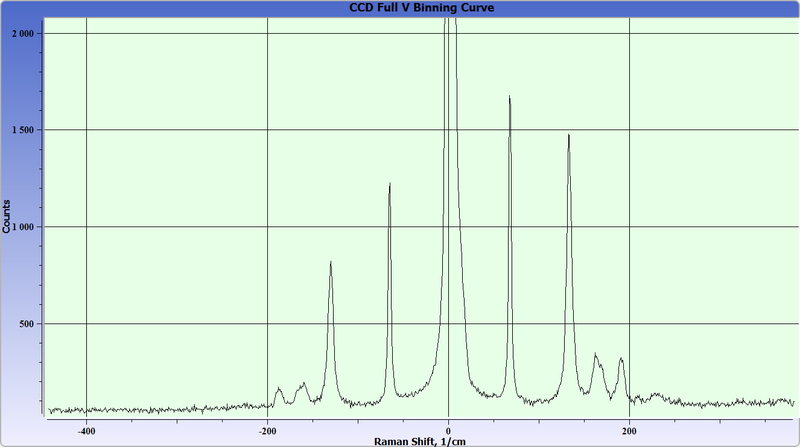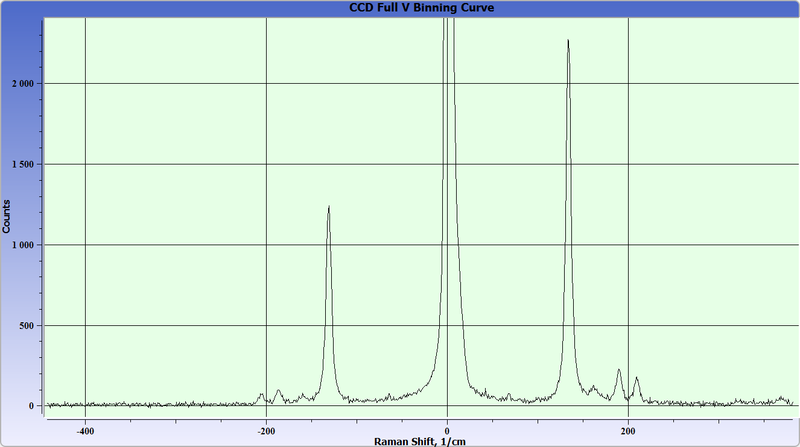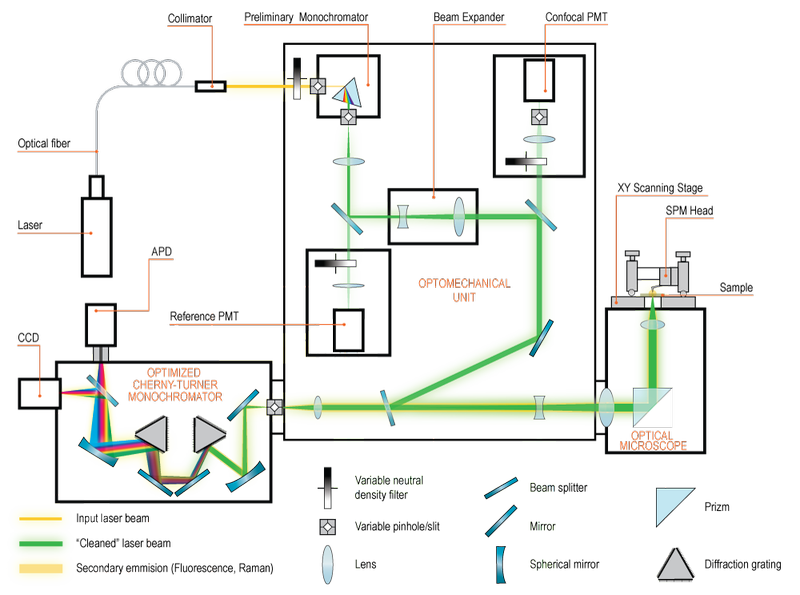Centaur I HR – Scanning AFM/Confocal/Raman/Fluorescence system with double dispersion monochromator for Raman/Fluorescence
Centaur I HR – Scanning AFM/Confocal/Raman/Fluorescence system with double dispersion monochromator for Raman/Fluorescence and AFM/Raman (TERS) imaging
Centaur HR combines:
- Scanning Probe Microscope;
- Inverted or Upright Optical Microscope;
- Laser Confocal Microscope;
- Raman Confocal Microscope;
- Fluorescence Confocal Microscope.

Centaur HR (High resolution) includes high-aperture double dispersive monochromator/spectrograph whose compact design combines high spectral resolution intrinsic for long-focus devices and extremely low stray light peculiar to double schemes. It is possible to measure Raman lines up to 20 cm-1 from excitation line with spectral resolution up to 0.01 nm which is different to the devices based on interferometric filters with typical values of 100-200 cm-1. Also it is possible to observe Stocks and Anti-Stocks lines simultaneously.


TeO2 crystal Raman spectra. Pike with 67 cm-1 (up spectrum) depends on crystal orientation. Excitation: single mode laser 532 nm, 10 mW.

Applications:
- Scanning Probe Microscopy;
- Raman Confocal Microscopy;
- Fluorescence Confocal Microscopy;
- Near-Field Scanning Microscopy;
- Tip-Enhanced Raman Spectroscopy (TERS);
- Tip-Enhanced Fluorescent Spectroscopy (TEFS).
Where to use:
- Chemistry. Combination of methods of scanning probe microscopy and Raman spectroscopy allows the analysis of the composition and structure of organic and inorganic substances, traditional and composite materials;
- Physics. Investigation of physical characteristics of surface and subsurface layers of substances and materials;
- Biology. Study of tissues, cells and their structures, biological molecules and the interactions between them;
- Interdisciplinary research. Research in the field of nanotechnology, pharmaceuticals, materials science, mineralogy, geology, forensic, analysis of art and many others.
Advantages of Centaur HR:
- Dual independent scanners (in head and base);
- Multiple simultaneous signal recording (confocal, spectra, topography, phase etc.);
-
Full spectra recording in each scan point with high spectral resolution (hyperspectral imaging);
-
Integration with virtually unmodified upright or inverted optical microscopes to work with transparent and none transparent samples;
- Modern cross-platform software (for all the Centaur units).
Components:
- Scanning Probe Microscope Certus;
- XY - sample piezo scanning stage Ratis;
- Confocal unit;
- Monochromator with high spectral resolution;
- Optical microscope (upright or inverted);
- Digital controller EG-3000;
- Software NSpec.


